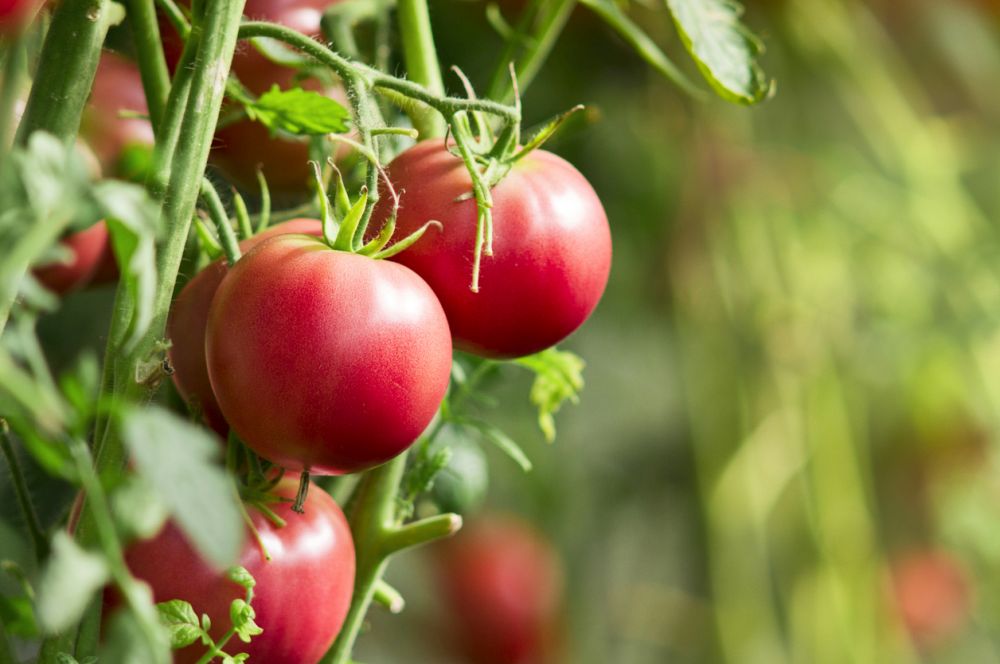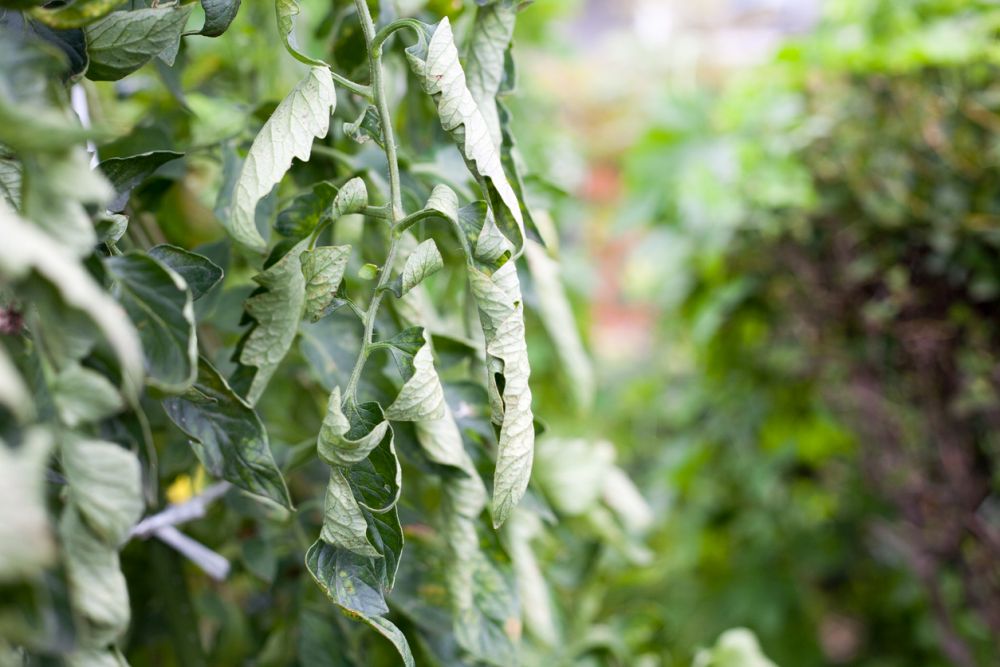How to Spot & Treat Tomato Leaf Curl Virus
The leaf-roll virus is a condition that takes a toll on the optimal yield of tomatoes. It’s also not odd to find other plants suffering from the same disease. If the tomato leaf curl virus spreads wide on your plants, they’re more likely to skip the fruit production process. This disease is a result of a virus that comes from the Geminivirus family.
Yellow leaf curl is more prevalent in tomatoes growing under arid and semi-arid regions. In this guide, we’ll look at what routinely causes tomatoes to suffer from the yellow leaf curl virus, the common symptoms to watch out for, alongside handy remedies you can work with to suppress the condition.
Read on to find more about the tomato yellow leaf curl virus.
What Causes Tomato Leaf Curl Virus?
The tomato leaf curl virus could be caused by environmental, biological, or chemical factors. But on most occasions, the virus is spread by whiteflies that are attracted to the underside of leaves since it’s a habitable spot for laying eggs. Whiteflies are soft-bodied pests with the potential to cause the same damage as aphids.
They catch the disease when sucking sap from an infected plant. Damage from the wind also more likely to cause leaf curl, so you don’t want to confuse the signs with effects caused by the virus. There’s isn’t an exact period when the leaf curl virus attacks your tomato plants the most—they can be infested any time of the year.
But late spring to early summer happens to be the most dominant period when the virus attacks tomatoes quite commonly. In other instances, your tomatoes will suffer as a result of an infestation caused by carrier plants that happen to mutate to the dreadful impact from the yellow leaf curl virus.
So, that suggests the host plant might not show any visible symptoms. Apart from the plant-to-plant transmission, your tomatoes might catch other closely related diseases from soil or seeds used for germination, causing the leaves to curl. But here’s the catch—the virus isn’t transmitted through soil or seeds.
What Damage Can Tomato Leaf Curl Virus Cause?
When the damage is grave, you’ll begin to see some yellow-green patches on the leaves. And besides curling, the underside of the leaves together with fruits will begin to have brownish and roughened patches. Leaves affected by the tomato leaf curl virus might also turn yellow, and the tomato plants might begin to experience stunted growth.
What follows after sluggish growth is low fruit production. And in the event where fruits begin to take shape, chances are they’ll appear smaller than usual. The same goes for any new growth that occurs after the infection.
Taking note of these symptoms, you’ll learn that it would be hard to ascertain whether your tomatoes are suffering from the leaf curl virus since the signs mimic those of other common diseases. Keep an eye on the early signs which are likely to show up on the leaves, so you can suppress the virus in due time. You want to watch out for any change in color and thickening of leaves that will curl upwards.
There are also chances the leaves will droop in a downward position. Once the leaves turn yellow, a few veins will form a fainted purple color. You also need to inspect your tomatoes for this symptom if you suspect they begin to exhibit signs of the leaf curl virus. This condition resembles that caused by the effects of herbicide damage. While the virus spreads further, the flowers and fruits will start to drop.
How to Treat the Curling of Tomato Leaves
It’s best to begin treatment while the whiteflies are at the nymphal stage since when they mature to become adults, they’re more active and spread the virus to other tomato plants a lot faster. Alongside that, you also want to keep pace with these other remedies:
- Regulate the temperature that your tomatoes are growing in. Warmer temperatures tend to boost the rate of metabolism on pests, especially those which prefer to lay eggs on the underside of leaves.
- If you’re looking to grow tomatoes in the backyard garden, you want to work with varieties that are more resistant to diseases.
- After treating the viral disease, you can enhance the harvest of the tomatoes by feeding them withEpsomsalt.
- You also want to factor in otherreasons besidesthe leaf curl virus why this condition could be happening on your tomatoes.
- Soggy soil tends to act as a perfect breeding spot for whiteflies. So, you want to regulate the watering intervals onyour tomatoes.
- Use this guide tolearn more about organic remedies you can use to get rid of whiteflies. The physical control measure work just fine for fungus gnats and whiteflies as well.
- Make the best use of chemical control options if the damage seems to spread far and wide on your tomatoes. Spraying the affected areas with imidacloprid, for instance, helps kill eggs laid by whiteflies on the underside of leaves or other affected areas.

